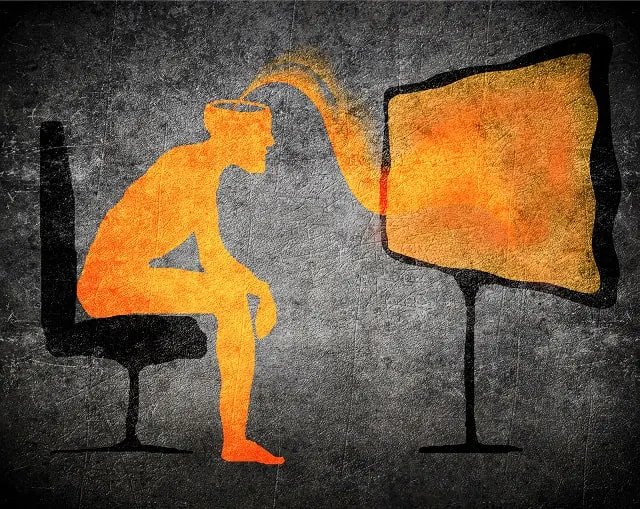You turn the TV off and suddenly you’re in the mood for a meal at your favorite restaurant. What’s the deal? You could just be hungry, or something you watched could be playing mental tricks on you. It’s called subliminal advertising, a form of marketing that many people think happens only in movies and TV shows. But it’s real, and it probably works on you more than you realize.
Definition of Subliminal Advertising
Subliminal advertising is a form of marketing that uses very intentional messaging, sounds, or visuals to get a specific point across to those viewing the ad. The goal of subliminal advertising is to make the audience walk away from the ad with a specific message in their mind that they didn’t consciously receive from the ad.
If you recall from a Saved By the Bell episode, Zack Morris used subliminal messaging on an audio recording to make his crush, Kelly Kapowski, want to partner with him for an upcoming dance. Zack adds his own voice behind music for Kelly to listen to, hoping that she’ll get the message.
It’s classic subliminal messaging. Is it sneaky? It can be. But not all subliminal advertising is meant to be used for less-than-ideal circumstances, like Zack’s antics. Much of it is simply to make consumers feel a specific way about the product or service being advertised. After all, it is a business’s job to sell, and subliminal messaging is one way to do it.
Types of Subliminal Messages
Photo by Marcus Herzberg from Pexels
There are three primary kinds of subliminal messaging, which can work for various forms of advertising, like radio or TV. You can even use subliminal messaging on social media, such as in your Instagram photos and captions, in Facebook ads, and in your Snapchat campaigns.
Backmasking
Backmasking is used in audio recordings. It features a voice recording played backward on a track or recording that plays forward. Some believe that these backward recordings give listeners subliminal messaging that their brains try to decode.
Sub-audible Messaging
Sub-audible messages get inserted into other audio, like a song or an interview recording. These messages are usually much lower volume than the primary audio, making them subtle, yet still there. Although the volume of these messages is too low to consciously hear, the listener’s brain will likely still store them in their subconscious memory, allowing them to pull from that information.
Sub-visual Messaging
One of the more common types of subliminal messaging is sub-visual messaging, which happens in TV, print, and other visual ads. This form of messaging shows subtle visual cues to viewers, like a hidden message within a logo or a small image tucked away within another image. Again, they’re usually so small or quick that you don’t realize you see them, but your brain still stores them.
Are There Benefits to Subliminal Advertising?
Absolutely! Most forms of advertising come along with benefits, and subliminal advertising is no exception. Unfortunately, it’s received somewhat of a negative reputation because of what gets shown on TV or talked about on social media or in articles. However, when used correctly, subliminal advertising can simply help an audience get the message the ad is trying to convey.
One significant benefit of subliminal advertising is that it can help an ad, logo, or another piece of marketing appeal to an audience without being pushy.
Screenshot via Amazon.com
Take the Amazon logo, for example. It’s one of the most well-known logos in the world, with Amazon spelled out and a smiley face underneath the word. What’s a little more subtle is that the smiling mouth is also an arrow, pointing from A to z, hinting toward the brand’s ability to carry just about anything that an online shopper needs to buy. There’s nothing pushy about it, but Amazon’s logo exudes what the brand is all about.
Another benefit is that subliminal advertising works! Our subconscious mind is always working, so there’s always an opportunity to present messages to it without realizing it.
Of course, there are also potential issues that could arise from subliminal advertising. One is that customers, if they find out your tactic, could be turned off by it. Another is the legality of subliminal advertising, which tends to cross some fine lines of what’s okay and what’s not. If you’re planning to use this form of marketing, it’s necessary to check with your legal team first to make sure you aren’t breaking any advertising laws.
Is subliminal advertising something you should use? That depends on your business and how your audience might perceive it. If you do decide to try it, make your audience — not your advertising — your priority, and avoid anything that might ruin the relationship.
Looking to get a crash course of different forms of advertising? Browse our guides on banner ads, direct response marketing, and social media advertising.
If you’re looking for a subtle yet effective way to boost social media engagement and grow your following, the ShareThis platform offers multiple ways to encourage your website visitors to follow you on social media, share your top-notch content with their networks, and even engage with your brand on social media. The ShareThis Social Feed makes it easy to stream your social media posts on your website, encouraging visitors to get in on the discussion and follow your brand. Plus, it’s easy to install in just minutes, and it’s free to use!







